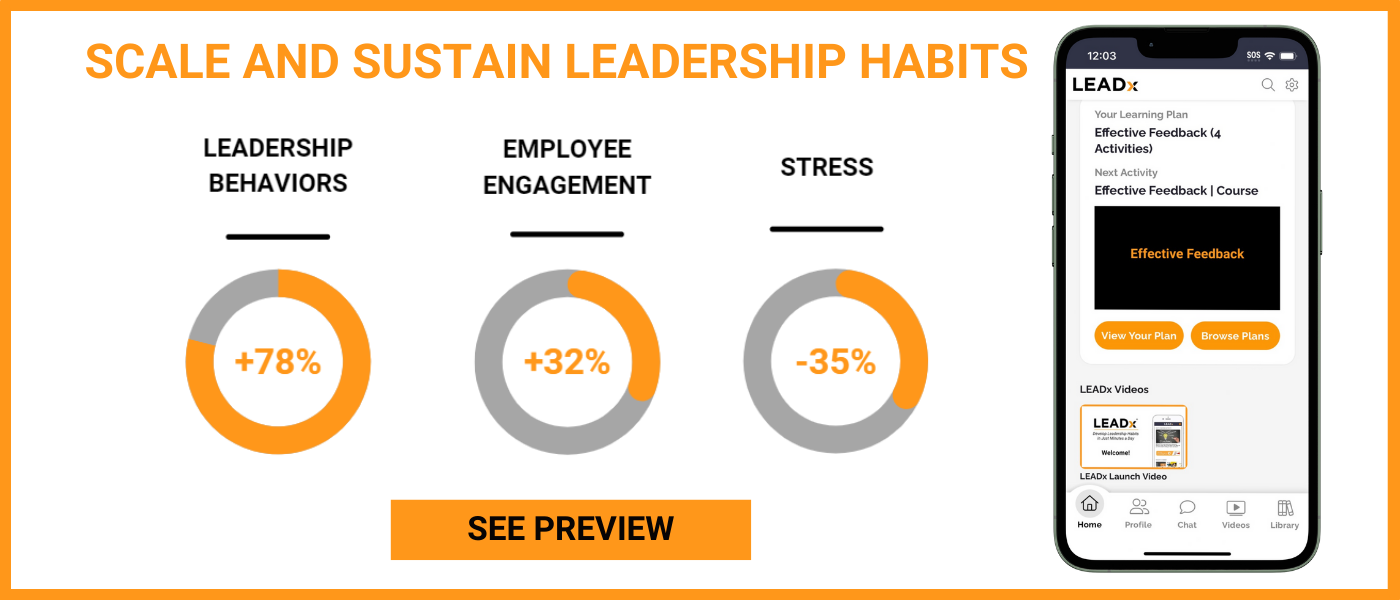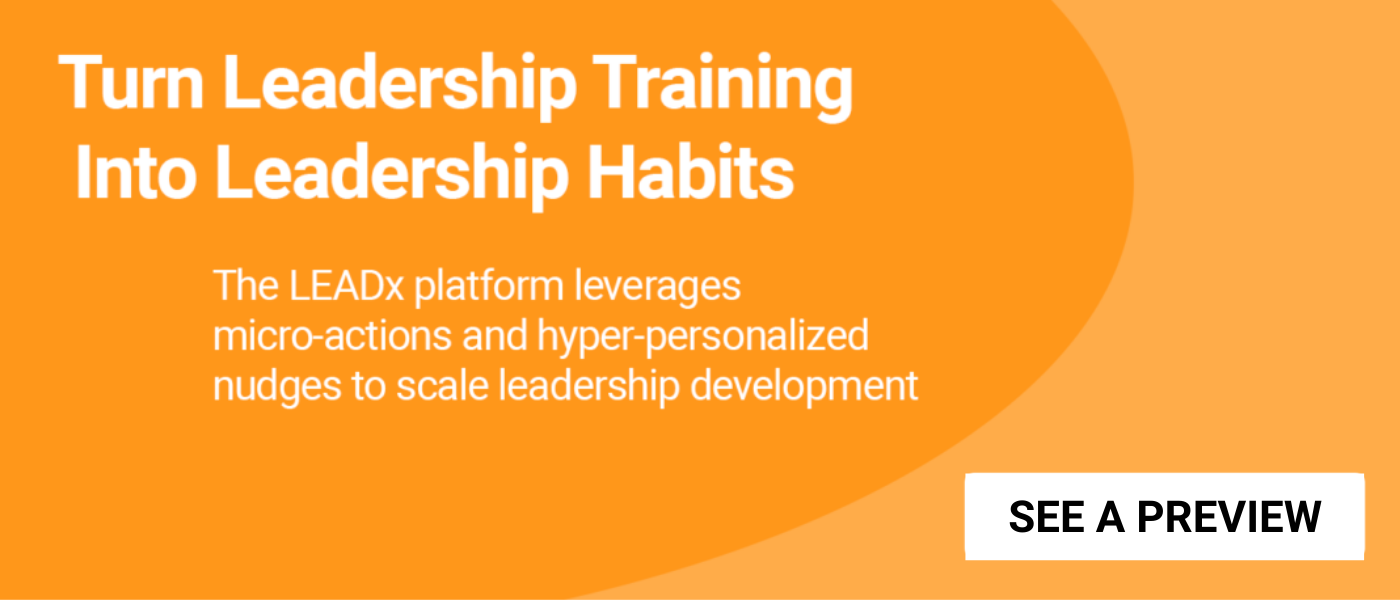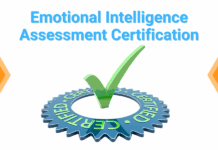
Leadership development professionals face an uphill battle: coaching is expensive, training doesn’t always translate to behavior change, and establishing a culture of learning can feel like a pipe dream. But what if there was a way to solve all three of these challenges at once, for just a small investment of time? Through my conversations, interviews, and surveys with hundreds of L&D leaders, one solution stands out above the rest: peer coaching.
 A well-designed peer coaching program will:
A well-designed peer coaching program will:
- Create a cycle of self-awareness, learning and on-the-job action taking.
- Plant the seeds for a culture of learning and grow it over time.
- Cost only in energy & time as leadership development professionals design, launch, and maintain the program, and as the participants engage in their coaching relationships.
To learn more about how to design and deliver a peer coaching program, I had the opportunity to connect with peer coaching expert and ICF certified coach, Claire Coltsmann. Coltsmann is the founder of LEADIKA, a coaching and leadership development consultancy. She was formerly a senior manager for leadership development at a large global consulting company where she helped create a culture of coaching and launched numerous peer coaching programs for tens of thousands of employees.

1. Why Peer Coaching?
Research links peer coaching in leadership development programs to a slew of benefits— increased application of skills, enhanced emotional support, and greater implementation of personal development plans.
With this in mind, Coltsmann developed the “Coach and Be Coached” program where participants both received 1:1 coaching and gave 1:1 coaching. She strove to accomplish three main goals:
- As a coach, participants grow their coaching skills. This helps them in their work leading a team or even as part of a team working on a project.
- As a coachee, participants get the benefit of having someone care about them and help them work on their own development.
- The power of networking: Participants also meet and get to know people across the organization that they would never meet otherwise.
While these were the program’s primary goals, the benefits extended far beyond. Peer coaching naturally reinforced on-the-job learning, strengthened company culture, and built leadership capabilities from the ground up.
2. The Structure: A Circle of Peer Coaches
To accomplish this, Coltsmann created a very specific structure that deviates significantly from the “accountability partners” or “peer-to-peer reciprocal coaching.” The idea is simple in concept: You create a circle of participants, typically with about five people. The key is separation: your coach is never your coachee. This ensures that every coaching session stays focused on your growth, not on trying to maintain a balanced exchange.
She recommends making the circles a minimum of 4-5 people. With triads, one dropout will force you into more complicated rematching. Lastly, she landed on a time commitment of five hours. This means you give at least five hours of coaching and receive at least five hours of coaching over the course of the program (typically over the course of three to six months).
The brilliance of this setup is how easy it is to take and apply to any program or topic within your leadership development. Once embedded, it can be applied to any leadership initiative—turning static training into an interactive, real-world learning experience. For example, she has launched a number of Coach and Be Coached programs for different audiences and different audiences – one that supported a women’s leadership program in the Philippines, another to explore their Gallup Strengths, one to support the launch of a new leadership model, and one on how to be a more inclusive leader. Once you have the process in place, it becomes a tool you can apply to any program to bring it to life.
3. The Step-by-Step Process for Implementation
Coltsmann broke down the step-by-step process to roll out a peer coaching program:
- Participants sign up voluntarily, committing to giving and receiving 5 hours of coaching over the course of about six months.
- Participants attend a mandatory training where they learn about the expectations of the program, learn the fundamentals of coaching skills and coaching mindset, and review the job aids they’ll use as they coach.
- Participants are assigned a coach and coachee.
- Coaching happens, with participants both giving and receiving coaching.
- Participants attend a debrief and provide feedback across the Kirkpatrick Model.
To make the program work smoothly at scale, she relied on volunteer organizers, many of whom were certified coaches like herself. Each organizer would be the main point of contact for approximately forty participants. Participants would reach out to this person with questions or concerns, the most common of which was they hadn’t heard from their coach, or coachee, or that their coach or coachee had dropped out of the program. It was the coordinators’ role to troubleshoot and rematch participants.
To form groups, she typically matched people by level, location, and language. Depending on your goals, you may consider cross-functional and cross-regional matching to encourage network growth and learning about the business.
Key Lessons Learned
Coltsmann broke down several of the most important lessons she learned as she scaled peer coaching across her organization.
- Be clear about what coaching entails: Make it very clear that you’re not asking people to teach, or mentor, or direct when they’re in the coach role. This is an opportunity for them to listen deeply, ask questions, reflect back, encourage stretch thinking and be open and curious.
- Manage expectations: Coachees should not expect to be coached by a professional coach, nor do they get to choose their coach.
- Less is more: 10 hours of coaching is 20 hours of a participant’s time. She found that five hours seemed to be the sweet spot, where participants got lots of value from their coaching without feeling overcommitted.
- Expect dropouts: Rejig pairings and match those who’ve lost their coach or coachee
- Start small, then scale: Start with a smaller group with a pure coaching approach that has no particular focus. Then, expand and begin to focus the Coach and Be Coached rounds on specific themes and areas of leadership.
- Trust the process: Not every pairing will click, but for most, peer coaching offers a degree of personalized, one-on-one development they wouldn’t get access to otherwise.
Her all-encompassing lesson? Just get started. Peer coaching is a cost-effective way to build leadership skills, increase engagement, and foster a coaching culture. The biggest hurdle is getting everyone used to the process. Once you get started, it becomes much easier to refine and scale. Start small, experiment with structure, and trust the process.






